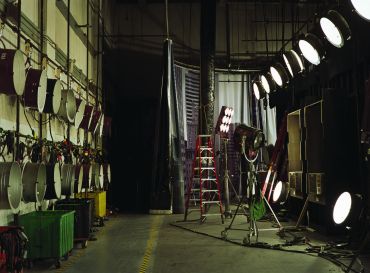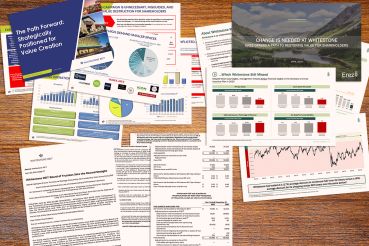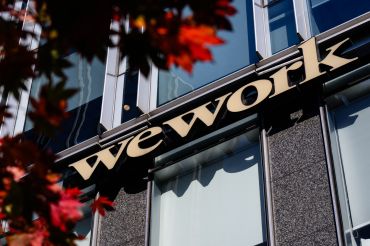Clean Energy DC: Q&A With ULI’s Billy Grayson
Commercial Observer spoke with Billy Grayson, executive director of ULI’s Center for Sustainability and Economic Performance, about what building owners need to do to meet the goals of the Clean Energy DC Omnibus Amendment Act of 2018.
By Keith Loria March 3, 2020 5:39 pm
reprints
A recent report by the Urban Land Institute revealed that Washington, D.C., is in a strong position to achieve the sustainability goals of the Clean Energy DC Omnibus Amendment Act of 2018, if it moves quickly.
The D.C. area has already taken some major strides in going green, with downtown’s Golden Triangle BID crowned as LEED Platinum; Brookfield Properties switching to renewable power in its Northern Virginia portfolio; and Oxford Properties investing in a green roof and solar panel system at 1101 New York Avenue NW.
Still, the act — commonly referred to as Clean Energy DC — has set ambitious energy goals, including a mandate for 100 percent renewable electricity by the year 2032. Other key goals include a 50 percent reduction in greenhouse gas emissions by 2032, with emissions completely cut out by 2050; net-zero energy for new construction beginning in 2026; and 5 percent of renewables deriving from D.C. solar projects by 2032, increasing to 10 percent by 2041.
Additionally, plans are for a net-zero energy retrofit program across at least 12.5 percent of the Department of General Services’ portfolio of District government-owned buildings between 2026 and 2032.
Commercial Observer spoke with Billy Grayson, executive director of ULI’s Center for Sustainability and Economic Performance, about what building owners need to do to prepare.
Commercial Observer: What impact will Clean Energy DC have on our area?
Billy Grayson: The act will have a big impact on commercial real estate in Washington, D.C. It calls for a significant improvement in energy efficiency of existing buildings. It calls for a significant increase in the amount of onsite renewable energy we have here in D.C. And it has a provision that requires that all new construction be net-zero carbon starting in 2026. All of that will fundamentally change existing buildings and new construction, as long as D.C. sticks to its plan.
The report noted that D.C. is in a good position right now. What is that opinion based on?
D.C. commercial buildings have a better Energy Star score than the average for the country. Our average is in the low 60s while the average for the country is in the low 50s. Our multifamily is also doing a little bit better than the national average for energy efficiency. Because D.C. has invested through Building Code and other acts in requiring LEED for new construction in commercial office, and a fairly high energy code relative to some other states, we’re pretty well-positioned in that we’ve already made significant progress on energy efficiency over the last eight to 10 years relative to the rest of the country.
What are some of the reasons D.C. is ahead of others in the nation?
It’s a combination of things. One of the big factors is the nation’s largest landlord — GSA — has been requiring for all leases that they move into buildings that are Energy Star certified that score 75 or higher. As the biggest tenant in Washington, D.C., that drives a lot of performance towards that standard.
Plus, D.C. has been requiring the LEED certification for new construction for at least the last five years, and that means most of the buildings built during that time have had to meet a much stricter energy code than the national average.
What are some of the actions that buildings need to be doing now to achieve the aims by 2032?
One of the most important things that buildings should be doing now is making sure they are benchmarking their energy performance in Energy Star Portfolio Manager, and if they’ve been doing that, making sure that score is correct. The D.C. government, when they set the requirements, they are going to use the Energy Star score, and if it’s not correct, a building can be unfairly penalized and end up having to make significant investments over the next five years to bring the building into compliance.
The second thing is a lot of whether or not your building is going to be required to make a 20 percent improvement in energy efficiency will be decided by whether you are above or below the median energy thrush score, so it behooves every owner who [is able] to get above. What they do in the next 11 months from a performance standard can have a tremendous impact on what they have to do over the next five years. Enhancing their facility management strategy, doing tenant engagement around energy efficiency, and making low-cost, no-cost investments in building technology to improve energy efficiency are three things every building owner should be doing right now.
What resources are available to guide building owners through all of this?
ULI has a number of resources available to help people think through energy efficiency for their spaces. We have a program called the Tenant Energy Occupancy Program that helps owners and tenants work together to build sustainable tenant fit-outs that can reduce tenant energy consumption by 50 percent. We also have a tool kit we developed called Embattling Sustainability in Real Estate Transactions to help people think about when they are buying and selling buildings and how to make the right investments when it comes to energy efficiency.
The D.C. government’s Department of Energy & Environment has a number of resources, with one of the most important being its net-zero building guide, which is a compilation of how people are approaching net-zero in new construction. As they think about complying by 2026, they should start thinking about it now.
D.C. will soon have a hub to support all of the buildings to comply with the Clean Energy Act that will also play an important role in providing education in best practices.
What sort of funding sources does the government provide to help people cost-effectively invest in improving energy performance?
One is DC Sustainable Energy Utility, which offers rebates, training, low-cost or free energy audits to anyone who wants to improve their performance. Another one is D.C.’s Property Assessed Clean Energy (PACE) program, which offers low-cost financing to make deeper investments in renewable energy.
What are the biggest challenges for buildings looking to comply in time?
Knowledge, money and the split incentive. Many building owners don’t know their Energy Star score and don’t know the most cost-effective things they can do to improve the energy efficiency of their building. We have found that every building has opportunities to improve that have a positive ROI, but many building owners don’t know how to start.
Money — even with low-cost and low-interest loans, because of the complexities of real estate ownership and transactions, it’s sometimes hard for owners to cost-effectively make major improvements to their buildings. It’s great we have a Sustainable Energy Utility to help improve that financial situation, especially to those owners who don’t have access to low-cost capital any other way.
The split incentive is another challenge. Many times, the owners don’t pay the utility bills for the buildings they own. The law requires the owners to be responsible for reducing energy consumption, even if they don’t control how the energy is being used in the building. Owners are going to have to get creative and proactive in working with tenants to make sure they are all working to reduce energy consumption.
What sort of fines will owners be faced with if they are not compliant?
The first time they’re going to get smacked is in 2026, and if they haven’t met their targets, they are going to have to pay a fine. DOEE is still working out how much that fine will be and results are going to be out probably by spring. They have said the fine will be big enough to deter non-compliance. In New York, the fines for 2025 compliance have calculated to be around $2 a square foot.
Also, if we continue sticking with the law, someone won’t get a building permit unless you have a net-zero building for new construction. In 2026, the penalty is tremendous because you won’t be able to build.
This is going to impact more and more buildings every year. There’s going to be some intermediate compliance targets. In 2028, all buildings that are 25,000 square feet or over will start being fined for non-compliance, and in 2032 is when you might see the first 10,000-square-foot and over buildings being fined.
It’s ambitious but there is a pathway for every building to comply with the 2026 compliance target threshold using existing technology in a way that’s cost-effective. With the 2032 target and the net-zero for new construction, we don’t think that is the case. We think there is going to need a significant amount of low-cost investments for significant change for buildings to hit the net-zero target.


